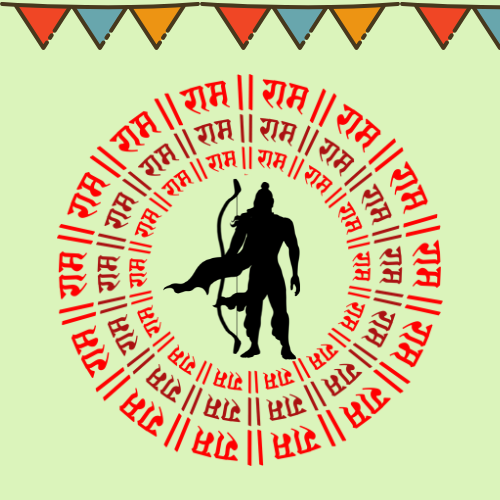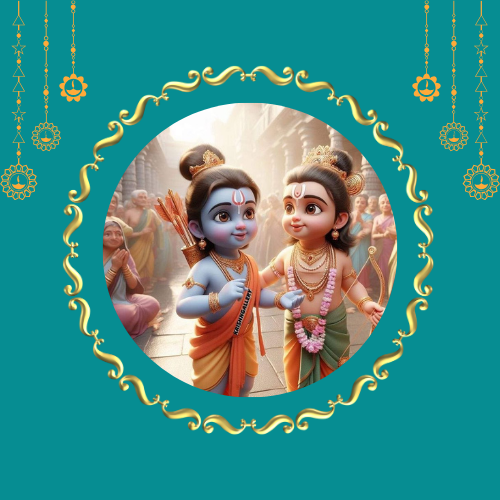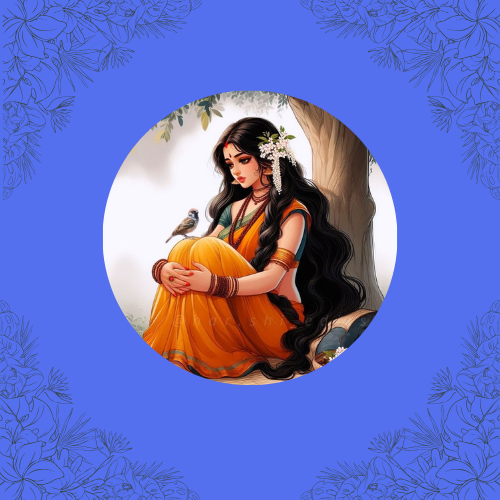Introduction
The Valmiki Ramayana, one of the oldest and most revered Sanskrit epics of ancient India, details the glorious life of Lord Rama, the seventh avatar of Lord Vishnu. A significant and heart-touching episode from this epic is the birth of Rama and his three brothers—Lakshmana, Bharata, and Shatrughna. This divine event not only marked the arrival of great souls on earth but also laid the foundation for the dharma yuddh (righteous war) against adharma.
Where Did the Sons Take Birth?
The four sons were born in the sacred city of Ayodhya, the capital of the Kosala kingdom. This ancient city, located on the banks of the Sarayu River, was ruled by the wise and noble King Dasharatha of the Ikshvaku dynasty.
Ayodhya was described in the Ramayan as a well-planned, prosperous, and pious city. Its people lived in harmony, and the kingdom was flourishing under Dasharatha’s rule—except for one thing: he had no heir.
Why Did King Dasharatha Perform a Yagna?
Despite having three virtuous queens—Kaushalya, Kaikeyi, and Sumitra, King Dasharatha remained childless for many years. Deeply worried about the future of his dynasty, he sought guidance from his royal priests and sages.
The wise Sage Vashistha, his royal guru, advised him to perform the Putrakameshti Yagna, a sacred fire ritual conducted by sages to attain the blessing of children.
How Did the Yagna Lead to the Birth of the Sons?
King Dasharatha invited Sage Rishyashringa, a powerful rishi, to perform the Putrakameshti Yagna. The ritual was conducted with absolute devotion and precision.
As the fire ceremony concluded, a divine being emerged from the sacred flames, holding a golden bowl filled with payasam (divine pudding). He handed it to Dasharatha and said:
“O King, the gods are pleased with your devotion. This divine payasam is a boon. Share it with your queens, and you shall be blessed with sons.”
Dasharatha accepted it with gratitude and divided the payasam among his queens:
- Kaushalya received half of the portion,
- Sumitra received a quarter,
- Kaikeyi received an eighth,
- and again, the remaining eighth was given to Sumitra, as per destiny’s will.
This distribution would determine the divine births of their sons.
When Were the Sons Born?
After consuming the payasam, the queens soon conceived. In the ninth month, on the ninth day (Navami) of the bright half of the month of Chaitra (March-April), a day considered highly auspicious in the Hindu calendar, the divine births occurred.
According to the Valmiki Ramayana (Bala Kanda, Sarga 18):
- Kaushalya gave birth to Rama, who would become the embodiment of dharma.
- Kaikeyi gave birth to Bharata, known for his loyalty and righteousness.
- Sumitra gave birth to twin sons, Lakshmana and Shatrughna, both of whom would play crucial roles in Rama’s life and mission.
Who Are the Four Sons of Dasharatha?
- Lord Rama – Eldest son of Kaushalya, considered an avatar of Lord Vishnu. He became the central figure of the Ramayana.
- Bharata – Son of Kaikeyi, revered for his unmatched devotion and sacrifice for his brother Rama.
- Lakshmana – One of the twins born to Sumitra, he was fiercely loyal to Rama and accompanied him during his 14-year exile.
- Shatrughna – The younger twin of Sumitra, known for his support to Bharata and his role in maintaining the kingdom during Rama’s exile.
Symbolic Significance of Their Births
The birth of the four princes was not just a royal event but a divine intervention to restore righteousness on earth. Their personalities symbolized:
- Rama – Dharma and idealism,
- Bharata – Devotion and humility,
- Lakshmana – Loyalty and bravery,
- Shatrughna – Support and selflessness.
Conclusion
The birth of Rama, Lakshmana, Bharata, and Shatrughna in the Valmiki Ramayan is a sacred narrative that reflects divine purpose and spiritual depth. Set in the holy land of Ayodhya, their births were the result of devotion, divine blessings, and a father’s deep desire for righteous heirs.
This powerful episode reminds us that every divine soul is born with a higher purpose—to uphold truth, dharma, and justice.
Suggested Read Next:



